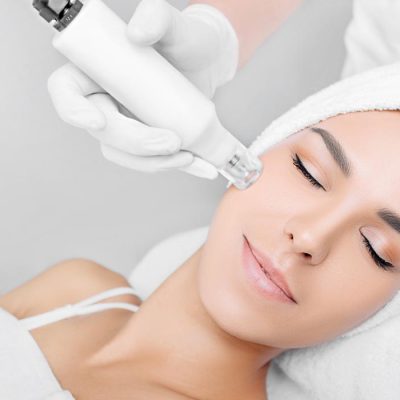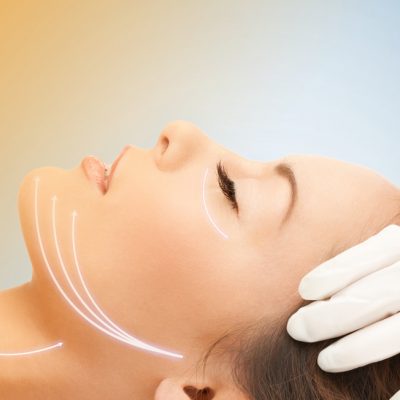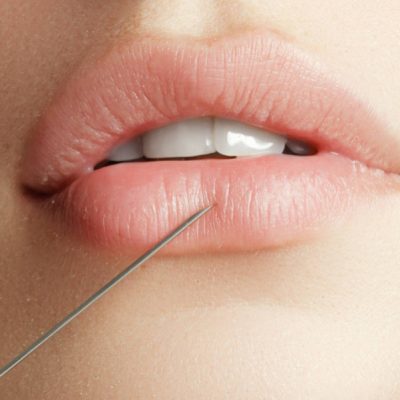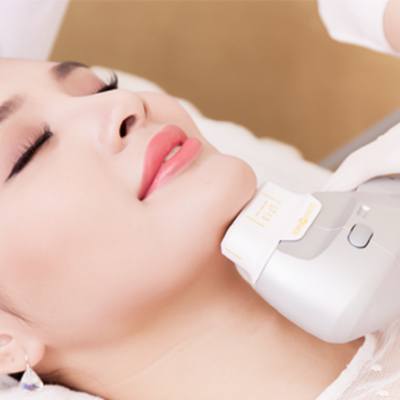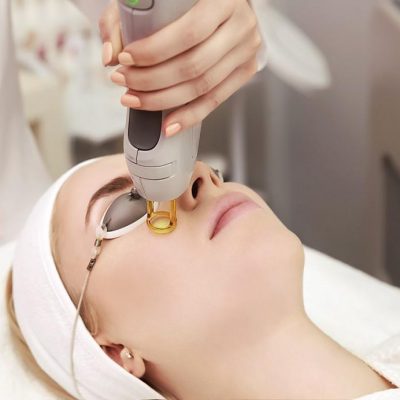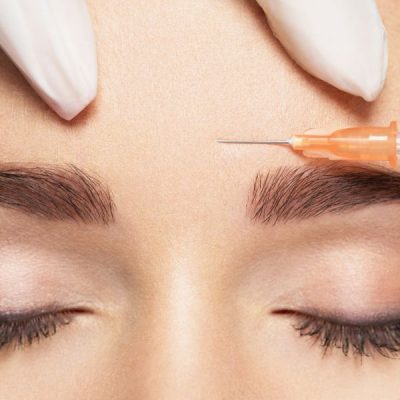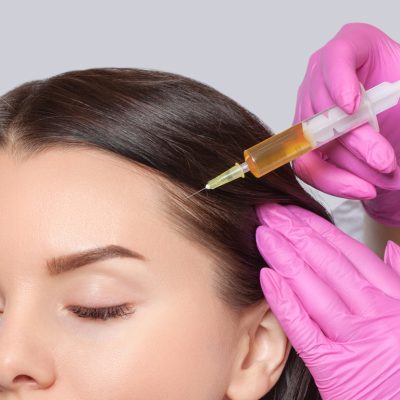Achieving an even skin tone and texture can enhance your overall complexion and give you a smoother, more radiant appearance. Here are some tips and suggestions to help you achieve that:
facial treatment dubai | hydrafacial dubai
- Protect your skin from the sun: Sun exposure can lead to uneven skin tone and texture. Always wear sunscreen with a broad-spectrum SPF of 30 or higher, even on cloudy days. Additionally, wear protective clothing and seek shade when the sun is at its strongest.
- Cleanse and exfoliate regularly: Cleansing your skin twice a day, in the morning and evening, helps remove dirt, oil, and impurities that can contribute to uneven skin texture. Exfoliating once or twice a week can help slough off dead skin cells and reveal smoother skin underneath.
- Moisturize daily: Keeping your skin well-hydrated is crucial for maintaining a smooth and even texture. Choose a moisturizer that suits your skin type and apply it daily to nourish and hydrate your skin.
- Use products with active ingredients: Look for skincare products that contain active ingredients like retinol, vitamin C, niacinamide, or alpha hydroxy acids (AHAs). These ingredients can help improve skin texture, promote cell turnover, and even out skin tone.
- Treat hyperpigmentation: If you have areas of hyperpigmentation or dark spots, consider using products with ingredients like hydroquinone, kojic acid, or azelaic acid. These ingredients can help reduce the appearance of dark spots and even out skin tone over time. However, it’s important to consult with a dermatologist before using any topical treatments.
- Consider professional treatments: Depending on your specific skin concerns, you may benefit from professional treatments such as chemical peels, microdermabrasion, laser therapy, or microneedling. These treatments can target specific skin issues and help improve overall skin tone and texture.
- Maintain a healthy lifestyle: A healthy lifestyle plays a significant role in your skin’s appearance. Get enough sleep, manage stress levels, eat a balanced diet rich in fruits and vegetables, and drink plenty of water. These factors can contribute to healthier-looking skin.
Remember that achieving an even skin tone and texture takes time and consistency. It’s important to develop a skincare routine that works for you and stick to it. If you have specific concerns or conditions, it’s always a good idea to consult with a dermatologist who can provide personalized advice and recommendations.
Clarification of Skin Tone and Texture
When we talk about skin tone and texture, we are referring to two distinct aspects of the skin:
- Skin Tone: Skin tone refers to the color or pigmentation of the skin. It is determined by the amount of melanin present in the skin. Melanin is a pigment that gives color to the skin, hair, and eyes. Skin tone can vary widely among individuals, ranging from very light to deep dark.
An even skin tone means that the color of your skin is consistent and without significant variations or discoloration. Common concerns related to uneven skin tone include hyperpigmentation (dark spots or patches), hypopigmentation (light spots or patches), redness, and blotchiness.
- Skin Texture: Skin texture refers to the surface of the skin and how it feels to the touch. It describes the smoothness or roughness of the skin and the presence of any irregularities. Smooth skin texture appears even, soft, and without bumps, acne scars, fine lines, wrinkles, or other imperfections. On the other hand, rough skin texture may feel uneven, bumpy, or have a dull appearance.
Improving skin texture involves achieving a smoother, more refined surface. It often entails addressing issues such as acne, acne scars, enlarged pores, fine lines, wrinkles, dryness, or rough patches on the skin.
Both skin tone and texture can be influenced by various factors, including genetics, sun exposure, hormonal changes, skincare habits, and lifestyle choices. By following the tips mentioned earlier and incorporating a consistent skincare routine, you can work towards achieving a more even skin tone and a smoother skin texture.

improve skin tone and texture
To improve your skin tone and texture, consider incorporating the following practices into your skincare routine:
- Cleanse your skin properly: Use a gentle cleanser suited for your skin type to remove dirt, oil, and impurities without stripping away the skin’s natural moisture. Cleanse your face twice daily, in the morning and evening.
- Exfoliate regularly: Exfoliation helps remove dead skin cells, unclog pores, and promote cell turnover, leading to smoother skin texture. Choose a chemical exfoliant with ingredients like AHAs (such as glycolic or lactic acid) or BHAs (such as salicylic acid) to gently exfoliate the skin. Start with once or twice a week and adjust frequency based on your skin’s response.
- Hydrate your skin: Proper hydration is essential for maintaining healthy skin tone and texture. Use a moisturizer suitable for your skin type to keep your skin hydrated and supple. Look for ingredients like hyaluronic acid, glycerin, or ceramides that help lock in moisture.
- Protect your skin from the sun: Sun damage can contribute to uneven skin tone and texture. Apply a broad-spectrum sunscreen with SPF 30 or higher every day, even on cloudy days. Wear protective clothing and seek shade when the sun is strongest.
- Incorporate antioxidants: Antioxidants like vitamin C can help brighten the skin and improve skin tone. Look for serums or moisturizers containing vitamin C and apply them in the morning before sunscreen.
- Address hyperpigmentation: If you have areas of hyperpigmentation or dark spots, consider using products with ingredients like hydroquinone, kojic acid, or niacinamide. These ingredients can help fade dark spots and even out skin tone. However, consult a dermatologist before using any potent ingredients.
- Consider retinoids: Retinoids, derived from vitamin A, have been shown to improve skin texture by promoting collagen production and cell turnover. Start with a low concentration retinol product and gradually increase usage as tolerated. It’s best to consult a dermatologist before incorporating retinoids into your routine.
- Stay hydrated and eat a balanced diet: Drink plenty of water to keep your skin hydrated from within. Additionally, maintain a balanced diet rich in fruits, vegetables, and foods containing essential fatty acids, vitamins, and minerals. These nutrients support skin health and contribute to a more even skin tone.
- Manage stress levels: Chronic stress can affect your skin’s appearance. Practice stress management techniques such as exercise, meditation, or engaging in activities you enjoy to promote overall well-being and healthier-looking skin.
- Be patient and consistent: Improving skin tone and texture takes time, so be patient and consistent with your skincare routine. Results may not be immediate, but with regular care and maintenance, you can achieve noticeable improvements over time.
Remember, if you have specific skin concerns or conditions, it’s always a good idea to consult with a dermatologist who can provide personalized advice and recommend suitable treatments or products based on your individual needs.
serum for even skin tone and texture
There are several serums available that can help improve skin tone and texture. Here are some key ingredients to look for in serums that target these concerns:
- Vitamin C: Vitamin C is a powerful antioxidant that can help brighten the skin, fade dark spots, and even out skin tone. Look for serums with stable forms of vitamin C, such as L-ascorbic acid or ascorbyl tetraisopalmitate.
- Niacinamide: Niacinamide, also known as vitamin B3, has multiple benefits for the skin. It can improve uneven skin tone, reduce redness, and minimize the appearance of pores. Niacinamide is well-tolerated by most skin types and can be found in various serums.
- Retinol: Retinol is a derivative of vitamin A and is renowned for its ability to improve skin texture and reduce the appearance of fine lines and wrinkles. It promotes cell turnover, stimulates collagen production, and can help even out skin tone. Start with a low concentration retinol serum and gradually increase usage as tolerated.
- Alpha Hydroxy Acids (AHAs): AHAs like glycolic acid and lactic acid are exfoliating agents that can help improve skin texture by dissolving dead skin cells and promoting cell turnover. They can also help fade dark spots and reduce the appearance of fine lines. Look for serums with a suitable concentration of AHAs based on your skin’s sensitivity.
- Peptides: Peptides are amino acid chains that can help stimulate collagen production, leading to improved skin texture and firmness. Look for serums containing peptides like palmitoyl pentapeptide-4 or copper peptides.
- Hyaluronic Acid: Hyaluronic acid is a hydrating ingredient that can help plump and moisturize the skin, improving its texture and overall appearance. It’s beneficial for all skin types, including dry and dehydrated skin.
Remember to patch test new products before applying them to your entire face, especially if you have sensitive skin or are prone to allergies. Additionally, it’s important to introduce new serums gradually into your skincare routine to allow your skin to adjust and minimize the risk of irritation.
Consulting with a dermatologist or skincare professional is always a good idea to determine the best serum and ingredients for your specific skin concerns and needs.




